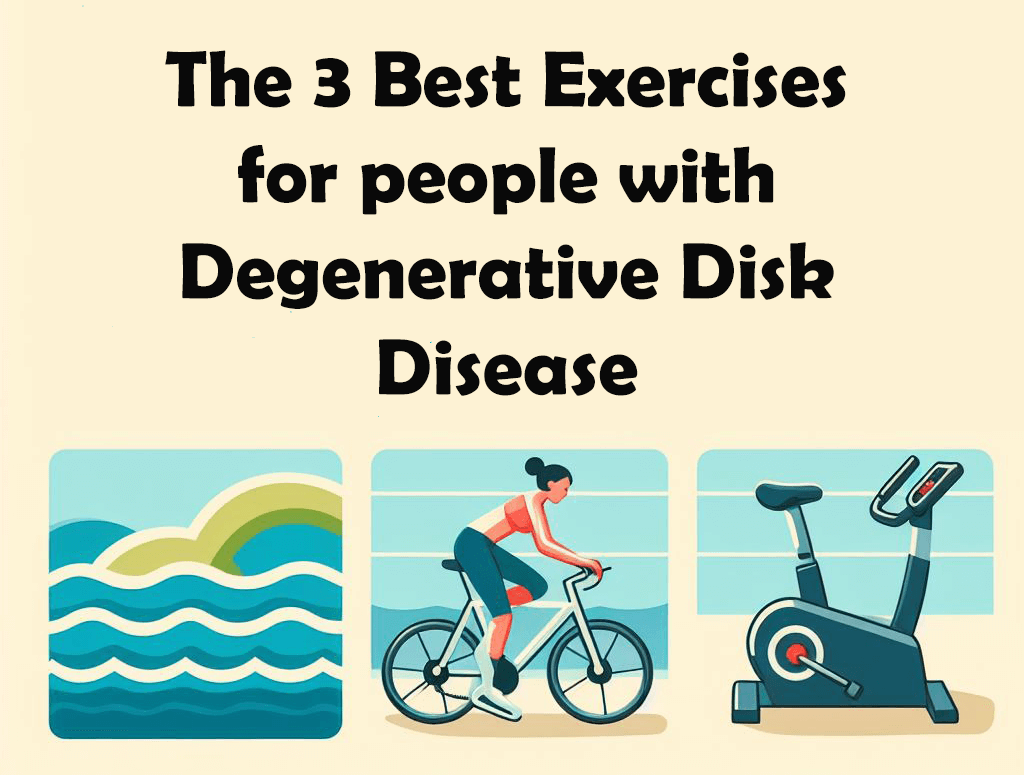Chronic Pain
What are the best exercises for Degenerative Disk Disease?
Suffering from degenerative disc disease and tired of letting it cramp your style? Well, have no fear – we’re about to let you in on a few closely guarded exercise secrets that could have you moving with more freedom and less pain in no time. (Okay, maybe not no time…these things don’t happen overnight. But you get the idea!)
Degenerative disc disease can make even the most routine daily activities uncomfortable, thanks to the gradual breakdown of the shock-absorbing discs between your vertebrae. [1]
But before you resign yourself to a sedentary life on the sofa, consider incorporating some strategic low-impact exercises that just might become your new best friends.
- Water Aerobics
Far from your grandma’s water aerobics class, hitting the pool for some low-impact cardio and resistance training is one of the best things you can do for degenerative disc disease. The water’s buoyancy supports your body weight, allowing you to move more freely with less compression on your spine. [2] Plus, you can get a great workout without stressing already inflamed areas. Just try to resist doing your best Michael Phelps impression. - Stationary Cycling
Whether you opt for an actual bike or a cycling machine, working your legs in a smooth, circular motion can significantly reduce pressure on your discs compared to higher-impact activities. [1] Cycling also promotes flexibility in your hips and core muscles, both of which play a big role in supporting your spine. Consider investing in a comfortable gel seat cushion to make your ride even more enjoyable. - Yoga
Before you dismiss yoga as an overly New Age-y pursuit, hear us out. Certain low-impact poses and stretches can do wonders for increasing mobility, building core strength to better support your spine, and promoting overall relaxation to ease muscle tension. [3] Just avoid any deep back bends or twists that could further aggravate your disc condition. And if your instructor starts chanting in Sanskrit, feel free to tune out.

By mindfully incorporating these three exercise superstars into your routine, you may find yourself better able to manage degenerative disc disease without always reaching for medication. Your discs (and the rest of your body) will be thanking you! Though maybe not with an actual voice…that might be a little unsettling.
In addition to exercise, using a properly designed memory foam cushion can also be helpful for preventing compression of the spine when sitting for extended periods.
Scientific Sources:
https://pubmed.ncbi.nlm.nih.gov/31996654/ [2] Dunleavy K, Marty H, Lamberty K, Nava BB, Siengsukon CF. Physical Therapy to Reduce Risk of Chronic Low Back Pain. Mo Med. 2015;112(2):124-127. https://www.ncbi.nlm.nih.gov/pmc/articles/PMC6172312/ [3] Cramer H, Lauche R, Haller H, Dobos G. A systematic review and meta-analysis of yoga for low back pain. Clin J Pain. 2013;29(5):450-460. doi:10.1097/AJP.0b013e31825e1492
https://pubmed.ncbi.nlm.nih.gov/23246998/



Hi, I’m JI HOON LIM.
I ordered Clevive Occipital Neuralgia Pillow on JUNE 7, 2025. (Order #12590)
Would you please let me know WHEN I can receive the pillow that I ordered?
Please answer me.
Thank you.
—–Original Message—–
From: “Clevive Customer Service”
To: ;
Cc:
Sent: 2025-06-07 (토) 15:07:23 (GMT+09:00)
Subject: Your Clevive order has been received!